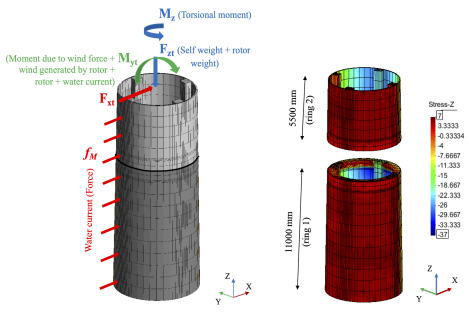A numerical finite element study on connections of SFRC offshore wind towers with prestressed CFRP reinforcement and steel connectors
DOI:
https://doi.org/10.21809/rilemtechlett.2020.117Keywords:
Offshore wind tower; material nonlinear analyses; shear frictional and tied connections.Abstract
The growing need for sustainable production of electricity highlights the importance and the necessity of having higher number and more effective offshore wind towers. The rapid growth of offshore wind towers is estimated to produce 4% of electricity demands in Europe by the end of 2020. The research described in this paper is part of a project dedicated for the development of innovative structural system using advanced materials for lightweight and durable offshore towers. Specifically, it discusses the nonlinear finite element modelling of the connection between representative prefabricated rings of offshore wind tower made by steel fibre reinforced concrete (SFRC), and prestressed by a hybrid system of carbon fibre reinforced polymers (CFRP) bars and steel strands. This connection is assured by post-tension high steel strength cables and concrete-concrete shear friction width an idealized geometric configuration of the faces in contact. The model takes into account the loads from the rotor, wind and water currents, by considering the critical loading conditions for the safety verifications of serviceability and ultimate limit states. The material nonlinear analyses are carried out with FEMIX V4.0 software, considering a 3D constitutive model capable of simulating the relevant nonlinear features of the SFRC, and interface finite elements for modelling the shear friction of the concrete-concrete surfaces in contact. The parametric analyses involve the influence on the relevant results of the SFRC fracture parameters, pre-stress level of the reinforcements, shape of interlock mechanism, friction angle and interface cohesion.

Downloads
Published
How to Cite
Issue
Section
License
Authors retain copyright of the articles published in RILEM Technical Letters and grant the journal the right of first publication with open access. The work is simultaneously licensed under Creative Commons Attribution 4.0 International License (CC BY 4.0) that allows others to share and adapt the work under the following terms: 1) a proper attribution is given in a form of bibliographic record with the DOI link directing to RILEM Technical Letters; 2) a link to the license is provided; 3) the changes (if any) are indicated.









